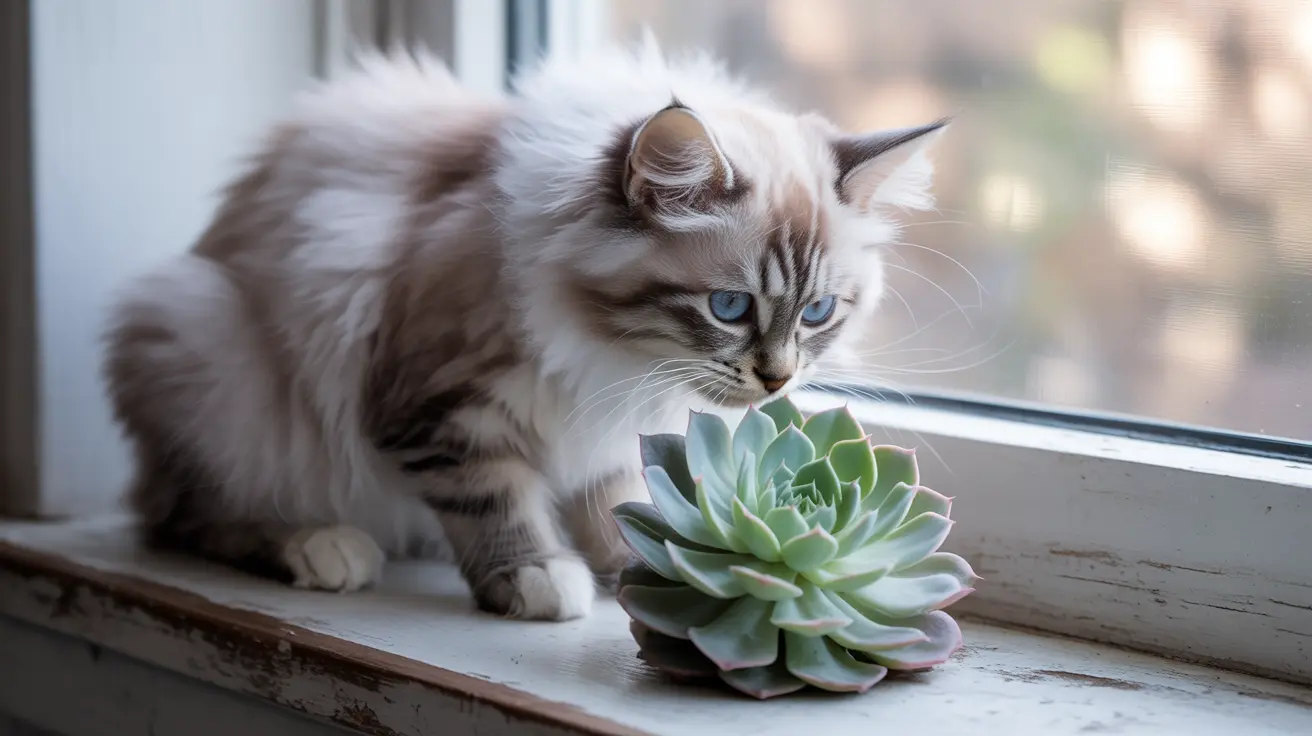Understanding Echeveria and Cat Safety
For cat owners who love decorating their homes with beautiful succulents, knowing which plants are safe for their feline friends is crucial. Echeveria, a popular genus of succulents known for its stunning rosette-shaped leaves, often raises questions about its safety around cats.
The good news is that Echeveria is scientifically confirmed to be non-toxic to cats. This makes it an excellent choice for cat owners looking to add some greenery to their living spaces without compromising their pets' safety.
What Makes Echeveria Safe for Cats?
Unlike many other succulents, Echeveria doesn't contain any compounds that could harm cats if ingested. With approximately 150 species in the genus, these plants have been extensively studied and documented as safe for household pets, including both cats and dogs.
Even if your curious cat decides to take a nibble, they won't experience any adverse effects. This natural safety feature sets Echeveria apart from many other popular houseplants and makes it an ideal choice for pet-friendly homes.
Identifying Safe vs. Toxic Succulents
While Echeveria is safe, it's important to understand that not all succulents share this safety profile. Some common succulents that can be toxic to cats include:
- Jade Plant (Crassula ovata)
- Aloe Vera
- Kalanchoe species
- Euphorbia varieties
- Snake Plant (Sansevieria)
These plants can cause various symptoms ranging from mild discomfort to serious health issues if ingested by cats.
Creating a Cat-Safe Plant Environment
When incorporating Echeveria into your home, consider these safety tips:
- Place plants in stable containers to prevent tipping
- Choose locations that allow cats to move freely without disturbing the plants
- Monitor your cat's behavior around new plants
- Keep toxic plants completely out of your home or in secured, inaccessible areas
Plant Care While Protecting Your Cat
Echeveria's care requirements align well with creating a pet-safe environment. These succulents prefer:
- Bright, indirect sunlight
- Well-draining soil
- Minimal watering
- Good air circulation
These conditions often mean placing the plants in elevated locations or near windows, which can naturally help keep them separate from curious cats.
Frequently Asked Questions
Is Echeveria toxic to cats if they nibble on the leaves?
No, Echeveria is completely non-toxic to cats. Even if your cat nibbles on the leaves, they won't experience any adverse effects.
What are the symptoms if my cat eats a toxic succulent like Jade or Aloe vera?
Symptoms can include vomiting, diarrhea, lethargy, drooling, and in severe cases, heart arrhythmias or nervous system effects. Immediate veterinary care is recommended if these symptoms occur.
Which succulents are safe alternatives to Echeveria for homes with cats?
Safe alternatives include Haworthia, Sempervivum (Hens and Chicks), certain Sedums, and Burro's Tail. These plants are all confirmed to be non-toxic to cats.
How can I prevent my cat from chewing on toxic succulent plants?
Use deterrent sprays, place plants in hanging baskets or high shelves, create physical barriers, or use citrus-scented repellents. The best option is to remove toxic plants entirely.
What should I do immediately if my cat ingests a potentially harmful succulent?
Contact your veterinarian or pet poison control immediately, monitor your cat for symptoms, and if possible, bring a sample of the plant for identification.
Conclusion
Echeveria stands out as a beautiful and completely safe succulent choice for cat owners. While many popular succulents can pose risks to our feline friends, Echeveria offers the perfect combination of aesthetic appeal and pet safety. By choosing Echeveria and following proper placement and care guidelines, you can create a harmonious environment where both your plants and pets can thrive.






